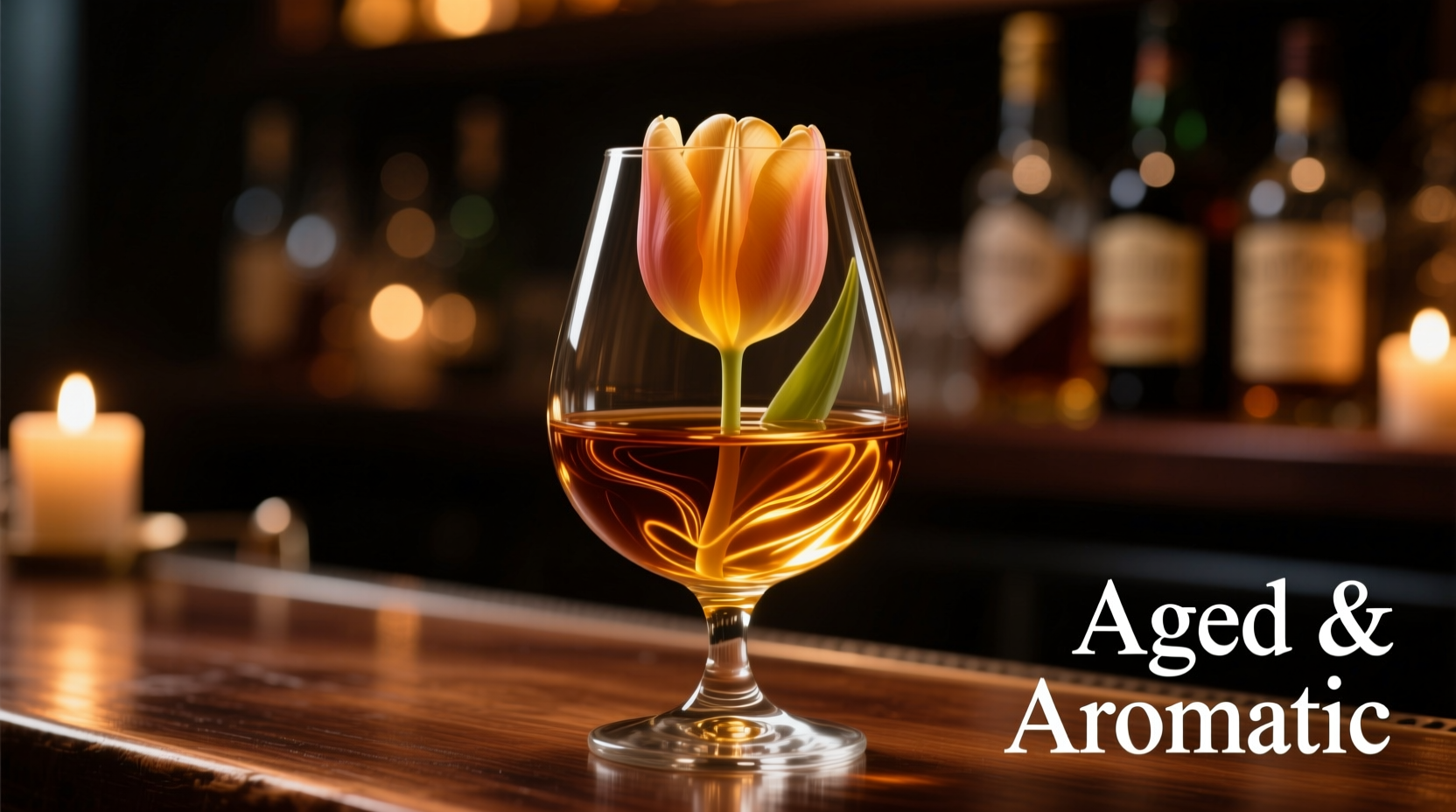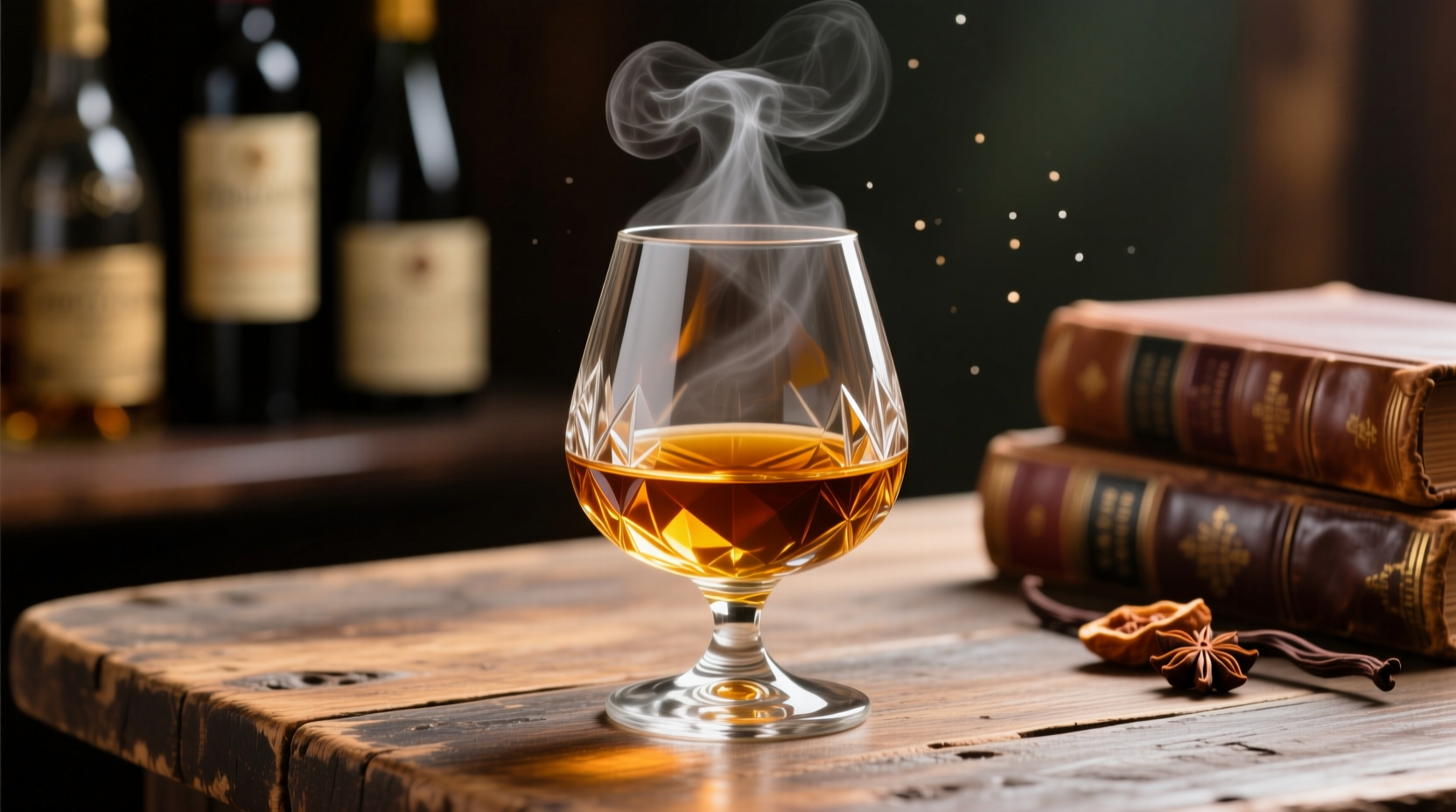Discover exactly what to expect when you take your first sip of brandy and how to appreciate its sophisticated flavor profile. Whether you're a complete beginner or looking to deepen your understanding, this guide breaks down the sensory experience of tasting brandy with practical insights you can apply immediately.
The Core Flavor Profile of Brandy
When you ask what does brandy taste like, the answer begins with its fundamental flavor architecture. Unlike clear spirits, brandy's character develops through careful distillation of fermented fruit (primarily grapes) and extended aging in wooden barrels. This process creates a distinctive flavor foundation built on several key elements:
- Dried fruit notes - Apricot, peach, plum, and raisin flavors emerge as the natural sugars concentrate during aging
- Wood-derived characteristics - Vanilla, caramel, and baking spices from oak barrels
- Floral undertones - Subtle violet or rose notes, especially in younger brandies
- Warming finish - The alcohol content (typically 35-60% ABV) creates a pleasant warmth without harshness in quality brandies
The interplay between these elements creates what sommeliers call "the brandy arc" - how the flavor evolves from initial aroma through the palate to the finish. Premium brandies show remarkable complexity as each phase reveals new dimensions.

How Production Methods Shape Brandy Taste
Understanding what brandy tastes like requires examining how production choices affect the final product. The distillation process, type of wood used for aging, and duration all contribute to distinctive flavor signatures:
| Production Factor | Impact on Flavor | Example |
|---|---|---|
| Double distillation (Cognac method) | Creates cleaner, more refined fruit notes | Cognac's distinctive apricot and violet notes |
| Single distillation (Armagnac method) | Preserves more rustic, robust character | Armagnac's pronounced plum and earthy notes |
| American oak barrels | Bolder vanilla and coconut notes | California brandies with pronounced sweetness |
| French Limousin oak | Subtler spice with gradual flavor integration | Traditional Cognacs developing complex layers |
According to the Bureau National Interprofessionnel du Cognac (BNIC), the specific terroir of Cognac's growing regions directly influences the grape composition, which subsequently affects the brandy's flavor potential. The chalky soils of Grande Champagne produce brandies with exceptional aging potential and floral characteristics, while Petite Champagne yields slightly fruitier expressions.
Decoding Brandy Age Classifications and Their Flavor Impact
When exploring what does brandy taste like by age, understanding classification systems helps predict flavor profiles. Different regions use specific terminology that indicates minimum aging requirements:
- VS (Very Special) - Minimum 2 years aging: Bright fruit notes dominate with subtle oak influence
- VSOP (Very Superior Old Pale) - Minimum 4 years aging: More integrated oak flavors with developing complexity
- XO (Extra Old) - Minimum 10 years aging: Deeply integrated flavors with tertiary notes of leather, tobacco, and dried flowers
A 2022 study published in the Journal of Agricultural and Food Chemistry analyzed the chemical compounds in aged brandies and found that extended barrel aging increases the concentration of vanillin (vanilla flavor) and lactones (coconut notes) while reducing harsher aldehydes. This scientific evidence supports the sensory experience drinkers notice as brandy matures.
The Practical Guide to Tasting Brandy Like an Expert
Now that you understand what brandy tastes like in theory, here's how to experience these flavors yourself through proper tasting technique:
- Choose the right glass - A tulip-shaped snifter concentrates aromas while allowing room for swirling
- Serve at proper temperature - 18-20°C (65-68°F) allows full flavor expression without alcohol overpowering
- Observe the color - Deeper amber indicates longer aging, though some brandies use caramel coloring
- Nose before tasting - Gently swirl and inhale to detect primary fruit notes before oak influences
- Sip deliberately - Let the brandy coat your palate to experience how flavors evolve from front to finish
Professional brandy tasters at the Wine & Spirit Education Trust recommend taking small sips with pauses between them. This technique allows your palate to reset and detect subtle flavor transitions that might be missed with continuous drinking. The finish - what remains after swallowing - often reveals the most sophisticated elements in premium brandies.
Common Misconceptions About Brandy Flavor
Many people wonder does brandy taste sweet or assume all brandies taste the same. Let's clarify some common misconceptions:
- "Brandy is always overly sweet" - While some mass-market brandies add sugar, traditional brandies derive sweetness from fruit concentration during aging, not added sugars
- "All brandies taste like cough medicine" - This perception comes from low-quality, poorly aged brandies; premium brandies offer smooth, complex profiles
- "Older brandy is always better" - While aging develops complexity, some styles reach their peak expression at specific ages
The International Wine and Spirit Competition's 2023 tasting panel noted that modern craft distillers are creating innovative brandies that challenge traditional flavor expectations while maintaining quality standards. These new expressions often highlight specific fruit varieties or experimental aging techniques that produce distinctive flavor profiles.
Practical Applications: Selecting Brandy Based on Flavor Preferences
Understanding what brandy tastes like helps you select bottles matching your palate. Consider these guidelines when choosing your next bottle:
- If you enjoy whiskey, try aged Armagnac for its robust, earthy character
- If you prefer lighter spirits, explore young Cognac VS for bright fruit notes
- If you love dessert wines, seek XO expressions with pronounced dried fruit and caramel notes
- If you appreciate complex cocktails, choose VSOP for balanced flavor that works well in mixed drinks
When reading tasting notes, look beyond generic terms like "smooth" or "rich." Specific descriptors about fruit varieties, spice types, and texture provide more actionable information. For example, "ripe peach with hints of cinnamon and a velvety texture" gives clearer expectations than simply "fruity and smooth."
How Food Pairings Enhance Brandy's Flavor Profile
The right food pairing can transform your understanding of what brandy tastes like. Traditional pairings work because they complement or contrast specific flavor elements:
- Dried fruits and nuts - Enhance brandy's natural fruit notes while the fat content softens alcohol perception
- Dark chocolate (70%+ cacao) - Creates a beautiful interplay with brandy's caramel notes
- Cheese (aged Gouda, blue cheese) - Salty elements contrast with sweetness while fat content balances alcohol
- Citrus zest - A small twist of orange or lemon peel can lift floral notes in younger brandies
Sophie Dubois, our featured expert, explains: "The magic happens when you find pairings that either mirror brandy's flavor components or provide a complementary contrast. A perfectly matched pairing doesn't just taste good - it reveals dimensions in the brandy you might not have noticed otherwise."











 浙公网安备
33010002000092号
浙公网安备
33010002000092号 浙B2-20120091-4
浙B2-20120091-4